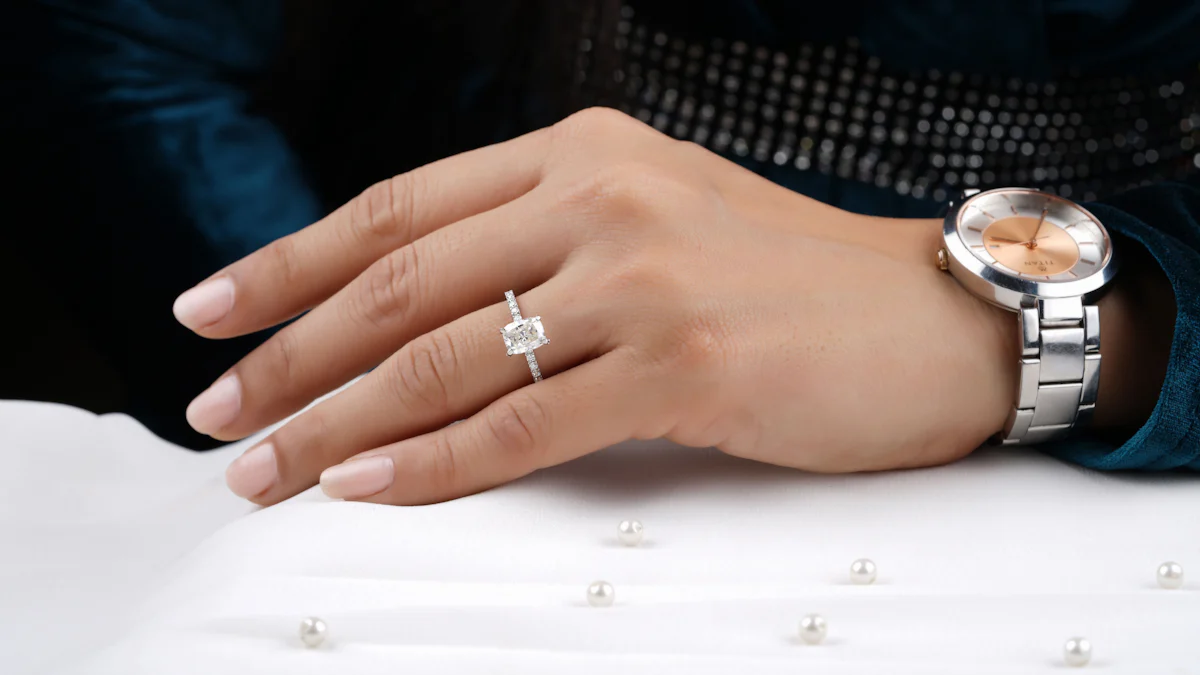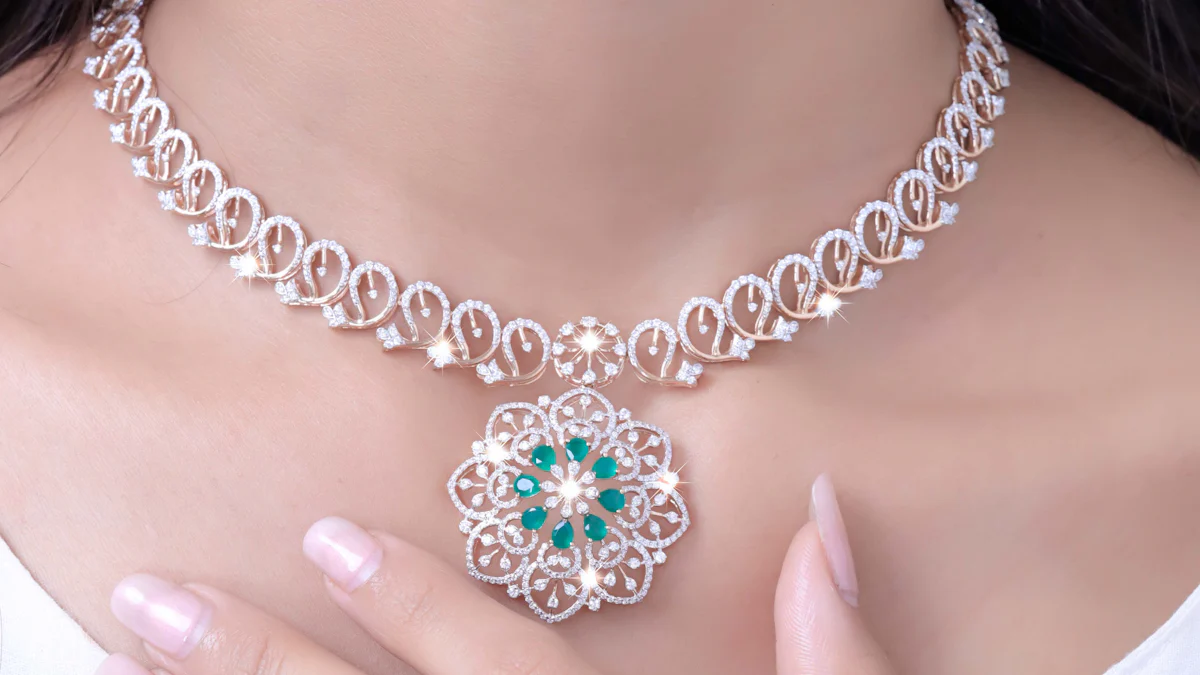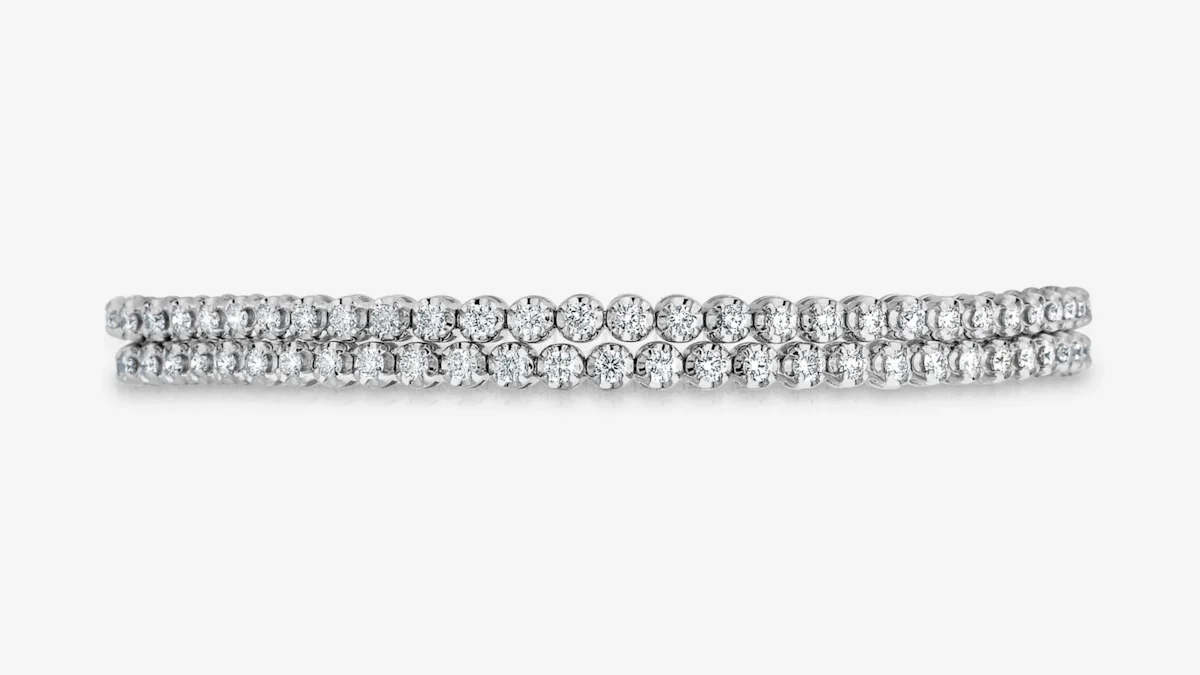What Does 1 CT TW Mean in Jewelry?

When you see "1 CT TW" on a jewelry label, it might seem like a jumble of letters. But it’s actually a simple way to describe what does 1 ct tw mean: the carat total weight of all the diamonds or gemstones in a piece. This term tells you the combined weight of the stones, not just one. Why does this matter? It helps you understand the overall value and appearance of the jewelry.
Knowing what does 1 ct tw mean makes comparing pieces easier. You can assess the size and brilliance of the stones at a glance. A higher carat total weight often means a more striking and substantial piece of diamond jewelry. However, don’t forget to consider the quality and cut of the stones too. Together, these factors determine the true beauty and worth of your jewelry.
What Is Carat Weight?

Definition of Carat Weight
Carat weight is a term you’ll hear often when shopping for diamonds or gemstones. But what does it actually mean? A carat is a unit of measurement used to describe the weight of a gemstone. It’s not about size—it’s all about how much the stone weighs. The word "carat" has an interesting history. Early gem traders used carob seeds as a reference for weighing gemstones because they believed these seeds had consistent weights. In fact, the term "carat" comes from the Greek word for carob seed. Over time, the system evolved, and in 1907, the metric carat was standardized to equal 200 milligrams. This standardization ensures that no matter where you are in the world, a carat always means the same thing.
How Carat Weight Is Measured
Measuring carat weight requires precision. Jewelers and gemologists use specialized tools to get an exact reading. While you might think a household scale could do the job, it’s not accurate enough for such small measurements. Instead, professionals rely on high-end scales designed specifically for gemstones. Here’s how the process works:
- The diameter of the diamond or gemstone is measured in millimeters.
- This measurement is then used in a diamond weight calculator or matched to a carat weight on a chart.
This level of accuracy is crucial because even a tiny difference in weight can significantly impact the value of a gemstone.
Why Carat Weight Matters in Jewelry
Carat weight plays a big role in how you perceive a piece of jewelry. It’s one of the first things you notice when looking at a diamond or gemstone. However, it’s important to remember that carat weight doesn’t always equal size. A well-cut diamond can look larger than its actual weight, while a poorly cut one might appear smaller. Certain settings, like a halo design, can also make a diamond seem bigger than it is. When you’re shopping for jewelry, understanding carat weight helps you evaluate the overall appearance and value of the piece. It’s not just about the total carat weight but also how the stones are cut and set.
What Is Total Carat Weight?
Definition of Total Carat Weight
When you see "total carat weight" on a jewelry label, it refers to the combined weight of all the gemstones or diamonds in that piece. Unlike carat weight, which measures a single stone, total carat weight gives you the full picture of the jewelry's gemstone weight. For example, if a bracelet has multiple diamonds, their weights are added together to calculate the total carat weight. This term is often abbreviated as CTW, CTTW, or CT TW. You might also notice letters like "A" or "G" on labels. These indicate whether the weight is approximate or guaranteed, ensuring transparency in the jewelry industry.
How Total Carat Weight Differs from Carat Weight
It’s easy to confuse carat weight with total carat weight, but they’re not the same. Here’s how they differ:
- Carat weight measures the weight of a single gemstone. One carat equals 200 milligrams.
- Total carat weight combines the weights of all gemstones in a piece of jewelry.
For instance, if a ring has a center diamond weighing 1 carat and smaller diamonds weighing 0.25 carats in total, the total carat weight would be 1.25 carats. This distinction matters because total carat weight affects the overall value and appearance of the jewelry. Knowing the difference helps you make informed decisions when shopping.
Examples of Total Carat Weight in Jewelry
Let’s break it down with some examples. Imagine you’re looking at a diamond ring. If it has one large diamond weighing 1 carat, its total diamond weight is 1 carat. Now, picture a ring with a 0.75-carat center diamond and smaller stones adding up to 0.50 carats. The total carat weight here would be 1.25 carats. Similarly, a tennis bracelet with 20 diamonds, each weighing 0.10 carats, would have a total carat weight of 2 carats. Jewelers calculate this by summing up the individual weights of all the stones. Understanding these examples can help you visualize how total carat weight works in real-life jewelry pieces.
Carat Weight vs. Total Carat Weight
Individual Stone Weight vs. Combined Weight
When you’re shopping for jewelry, understanding the difference between carat weight and total carat weight can save you from confusion. Carat weight refers to the weight of a single gemstone, like a diamond. On the other hand, total carat weight combines the weight of all the stones in a piece. For example, a ring with one diamond weighing 1 carat has a carat weight of 1. But if the same ring has smaller diamonds adding up to 0.50 carats, the total carat weight becomes 1.50 carats.
Many first-time buyers mix up these terms. It’s easy to assume that total carat weight means a single large stone, but that’s not always the case. Larger carat weights are rarer and more expensive, so knowing this distinction helps you set realistic expectations about the value of your jewelry.
Impact on Jewelry Appearance
The way carat weight and total carat weight affect a piece’s appearance is fascinating. A single large diamond often looks more striking than several smaller ones with the same total weight. For instance, a 1-carat diamond solitaire ring will likely appear more prominent than a ring with multiple diamonds totaling 1 carat.
However, the design and setting also play a big role. A halo setting, where smaller diamonds surround a center stone, can make the center diamond look larger. Similarly, a tennis bracelet with evenly spaced diamonds creates a balanced and elegant look, even if the stones are smaller. The combined weight of the stones influences how substantial the jewelry feels and looks.
Impact on Jewelry Pricing
Carat weight and total carat weight significantly impact pricing. Diamonds are priced per carat, and larger stones command higher prices because they’re rarer. For example, a 1-carat diamond might cost between $2,500 and $18,000, depending on its quality. But if you’re buying a piece with multiple smaller diamonds, the total price will be lower, even if the total carat weight is the same.
Here’s a quick comparison of diamond prices based on weight:
| Diamond Weight | Carat Price (Round Brilliant Cut, Per Carat) | Total Price | | --- | --- | --- | | 0.50 Carat | $1,220 – $5,800 | $610 – $2,900 | | 1.0 Carat | $2,500 – $18,000 | $2,500 – $18,000 | | 1.50 Carat | $3,300 – $24,000 | $4,400 – $32,000 | | 2.0 Carat | $4,200 – $29,000 | $8,400 – $58,000 |
As you can see, the price increases dramatically with carat weight. This is why understanding the difference between carat weight and total carat weight is crucial when evaluating the value of a piece. It also helps you make smarter choices during a diamond appraisal or when considering diamond grading.
How "1 CT TW" Affects Jewelry Selection
Interpreting "1 CT TW" on Jewelry Labels
When you see "1 CT TW" on a jewelry label, it’s easy to misinterpret what it means. Many people assume it reflects the size of individual diamonds, but it actually refers to the combined weight of all the stones in the piece. For example, a diamond ring with multiple smaller diamonds totaling 1 carat will have "1 CT TW" on its label. This doesn’t mean there’s a single 1-carat diamond in the ring.
To make informed decisions, you should look beyond the total carat weight. Ask about the number of diamonds included and their individual weights. Also, check the cut, clarity, and color grades of the stones. These factors significantly impact the quality and appearance of the jewelry. Don’t forget to inquire if the diamonds are natural, synthetic, or treated. This information ensures you know exactly what you’re buying.
Questions to Ask When Shopping for Jewelry
Shopping for diamond jewelry can feel overwhelming, but asking the right questions helps simplify the process. Here are some key questions to ask your jeweler:
- Does the total weight include all gemstones in the piece?
- What is the weight of the largest diamond?
- How does the total carat weight affect the price of this jewelry?
- Are the diamonds measured individually or as a group?
These questions help you understand the value and craftsmanship of the piece. They also ensure you’re not misled by the label. For instance, a diamond engagement ring with a 1-carat center stone will look very different from one with multiple smaller diamonds totaling 1 carat.
Tips for Choosing Jewelry Based on Carat Weight and Total Carat Weight
Choosing the perfect piece of jewelry involves more than just looking at the carat weight or total carat weight. Here are some tips to guide you:
- Consider the design. A solitaire diamond ring with a single 1-carat diamond often looks more striking than a ring with smaller diamonds totaling 1 carat.
- Evaluate your budget. Larger diamonds are rarer and more expensive, so decide what works best for you.
- Focus on quality. A higher total carat weight doesn’t always mean better quality. Pay attention to the cut, clarity, and color of the diamonds.
- Compare pieces. For example, a tennis bracelet with 20 diamonds totaling 1 carat will have a different visual impact than a diamond engagement ring with a single 1-carat stone.
By keeping these tips in mind, you can find jewelry that matches your style, budget, and expectations.
Examples of Carat Weight and Total Carat Weight

Example 1: A Solitaire Diamond Ring
Picture a classic solitaire ring. It features a single diamond as the centerpiece. If the diamond weighs exactly 1 carat, the label will read "1 CT TW." This means the total weight of the ring’s gemstones is 1 carat. Solitaire rings are popular because they highlight the beauty of a single diamond. The simplicity of the design draws attention to the stone’s brilliance and cut. When shopping for a solitaire ring, you’ll want to focus on the quality of the diamond since it’s the star of the show.
Example 2: A Multi-Stone Diamond Bracelet
Now, think about a tennis bracelet. These bracelets often feature rows of smaller diamonds. For example, a bracelet might have 20 diamonds, each weighing 0.05 carats. Together, their total weight would be 1 carat, so the label would say "1 CT TW." Jewelers often showcase the total carat weight in advertisements for multi-stone pieces like this. However, they may also specify the weight of individual stones to give you a clearer idea of the bracelet’s design. A tennis bracelet with evenly spaced diamonds creates a balanced and elegant look, even if the stones are smaller.
Example 3: A Cluster Diamond Pendant
Cluster pendants are another great example. These pieces combine multiple small diamonds to create the illusion of a large diamond. For instance, a pendant might have five diamonds, each weighing 0.2 carats. Together, their total weight would be 1 carat. The label would still read "1 CT TW," but the design would look very different from a solitaire pendant with a single 1-carat diamond. Cluster designs are perfect if you want a bold look without the cost of a large diamond. They’re also a creative way to maximize sparkle and brilliance.
💡 Tip: When buying jewelry, always ask about the weight of the central diamond or the largest stone. This helps you understand how the total weight is distributed across the piece.
When you see "1 CT TW" on a jewelry label, it tells you the total weight of all the stones in the piece, not just one. This distinction is key when comparing options. Knowing the difference between carat weight and total carat weight helps you evaluate a diamond’s value, appearance, and price. For example, a ring with a 1-carat center stone holds more value than one with smaller diamonds totaling 1 carat.
Understanding what does 1 ct tw mean also helps you avoid overpaying. You’ll know exactly what you’re buying and how the total weight impacts the design and cost. Whether you’re shopping for an engagement ring or a tennis bracelet, this knowledge ensures you make smarter choices.
💡 Tip: Buying a diamond just under a weight category, like 0.49 carats instead of 0.50, can save you up to 8% without sacrificing appearance.
FAQ
What does "1 CT TW" mean on a jewelry label?
"1 CT TW" means the total weight of all diamonds or gemstones in the piece equals 1 carat. It doesn’t refer to the weight of a single stone. Always ask about individual stone sizes for clarity.
💡 Tip: Check if the stones are evenly distributed or if one is larger than the rest.
Is total carat weight the same as carat weight?
No, they’re different. Carat weight measures one gemstone’s weight. Total carat weight combines the weight of all stones in the jewelry. For example, a ring with multiple small diamonds totaling 1 carat will have "1 CT TW" on its label.
Does a higher total carat weight mean better quality?
Not necessarily. Total carat weight only tells you the combined weight of the stones. Quality depends on factors like cut, clarity, and color. A smaller, high-quality diamond often looks better than a larger, low-quality one.
💡 Note: Always evaluate the 4Cs (cut, color, clarity, carat) when buying diamonds.
How can I tell if "1 CT TW" includes natural or synthetic diamonds?
Ask your jeweler directly. Labels like "1 CT TW" don’t specify if the stones are natural, synthetic, or treated. Reputable jewelers will provide this information and include it in the certification.
Why is a single 1-carat diamond more expensive than smaller diamonds totaling 1 carat?
Larger diamonds are rarer, making them more valuable. A single 1-carat diamond often costs more than multiple smaller diamonds with the same total weight. The price also depends on the diamond’s quality and grading.
💡 Tip: If you’re on a budget, consider cluster designs for a bold look at a lower cost.
See Also
Exploring the Size of a 2.25 Carat Diamond
What is the Price of a 2 Carat Lab Diamond?
A Guide to Diamond Cuts for Engagement Rings

